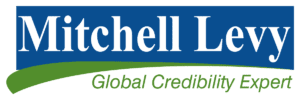How to Reward Your Best Clients and Prospects
How much are your A-list clients and prospects worth to you? This is one of the most important questions you and your marketing department have to constantly address, during good times as well as bad.
The metrics of identifying your best clients and prospects are relatively easily described:
- Sales volume. How much are your best clients and customers spending each year?
- Profit margin. How profitable is their business?
- Payment history. Some categories of customers may spend a lot, but make getting paid a continuing challenge. Are these customers worth it?
- Loyalty. How long are your best clients likely to stick around? How likely are they to defect at the first sign of a price war, quality glitch, or technological change?
- Referrals. How many referrals do they generate? How good are the referrals?
- Customer Lifetime Value. This, of course, is the key metric, the one that takes into account not only how much they spend as well as how long this category of customers tends to remain active buyers.
But, there’s a more important question
Most firms find it easier to identify their best clients and prospects, but find it much harder to answer the question,”How do you say thanks?”
How you thank your best clients and prospects is the today’s key issue in building long and profitable relationships with them.
In many cases, options quickly run out. There’s only so many price and service concessions, payment flexibility, rewards, and entertainment/hospitality alternatives.
It becomes hard to find a way to tangibly demonstrate your appreciation to your best clients and prospects. It also becomes hard to stand out from the competition and build emotional connections with clients and prospects.
The Premium Advantage
There are several reasons premium books–books published specifically for your best clients and prospects, and distributed with your compliments–are the perfect way to say thank you:
- Tangible. In an electronic world, with the volume of mail declining each year, books offer a tangible advantage. They can be held in the hand and placed in a bookcase. In many ways, books have an almost magical appeal; an expensively-produced brochure can be ignored or tossed, but, somehow, few people can throw out a book. Thus, a book with your name on the cover has a long shelf-life in your client or prospect’s office.
- Customized and relevant content. You and your marketing team know a lot about your clients and prospects. You know your client and prospect’s challenges, goals, and problems. You know what keeps them awake at night. This knowledge gives you the power to publish a book with relevant, helpful content, content that will empower and inspire your clients on a deeply personal level. You can generate personal loyalty on a level eclipses the costs of producing, printing, and distributing the book.
- Action, scarcity, and urgency. Scarcity is a great motivator. Yet, it’s often hard to build urgency into professional and service businesses. But, it’s relatively easy to publish a limited distribution book, one that not be reprinted! Whether you publish 500, 2,500, or 5,000 copies, when you promise “When they’re gone, they’re gone forever!” you’re able to tap into one of the most powerful human emotions, an ageless formula that produces results time after time.
Combine helpful, relevant content with the motivation generated by limited quantity, you have a formula simultaneously thanking clients and prospects while inspiring them to take immediate action.
Best of all, in an environments characterized by constant and rapid change, a successful premium book in 2010 paves the way for anticipated updates and follow-up successes 2011, 2012, and beyond.
Each year, the format remains the same, but, by updating the contents and changing the colors on the cover–and keeping supply less than demand–you have a formula for yearly success.
The perfect team
You know your business; we know ours!
- You know your client and prospects, their problems, goals, frustrations and “hot buttons.”
- We know how to efficiently produce books that deliver helpful, relevant, content in simple, straightforward language.
Working together, we can make things happen…and we can do it in a fraction of the time the “big guys” in New York City would be able to do.

